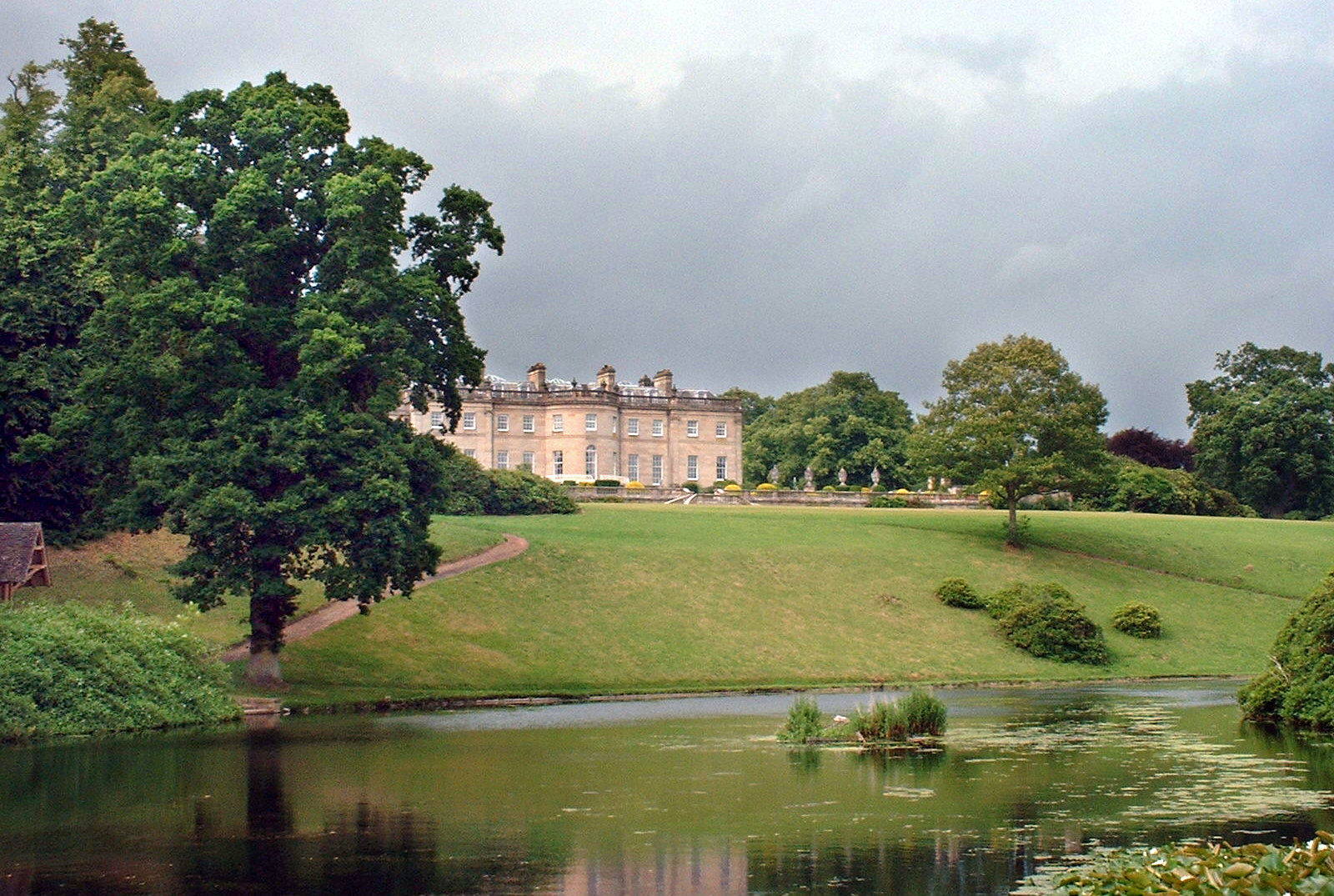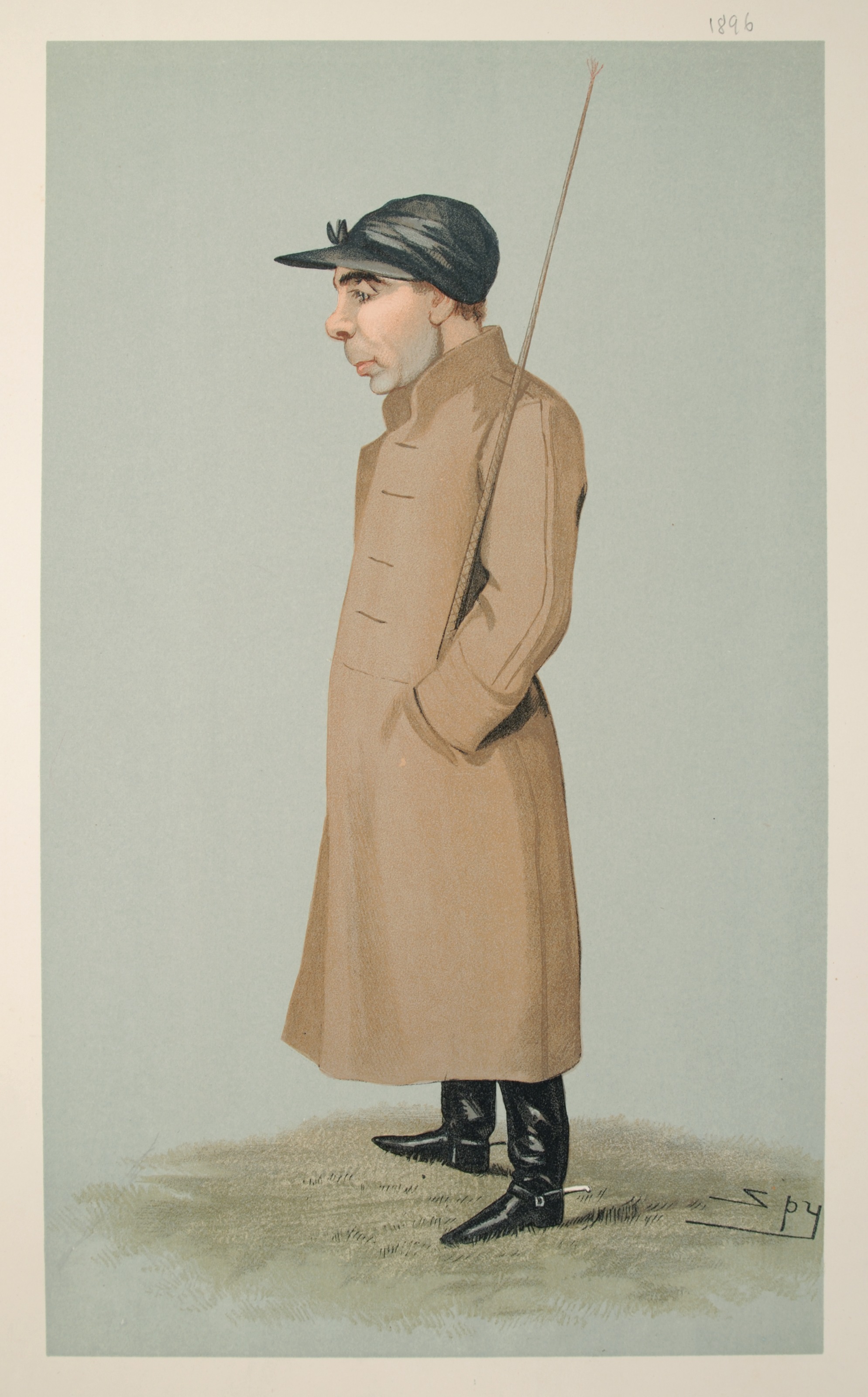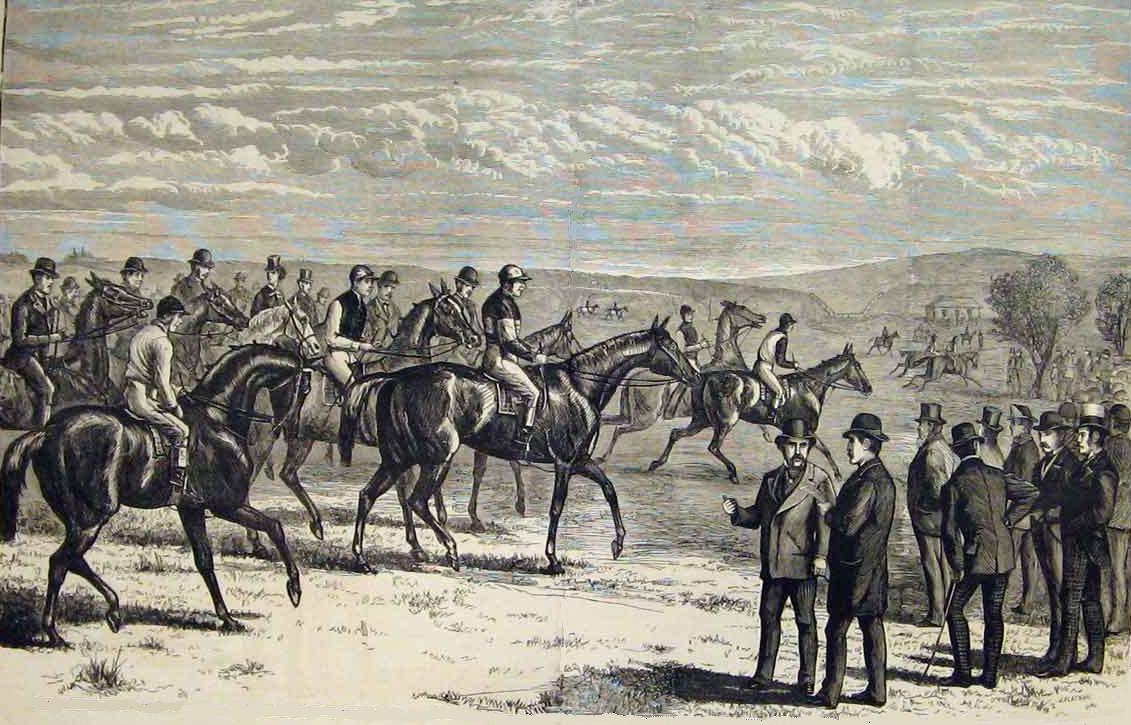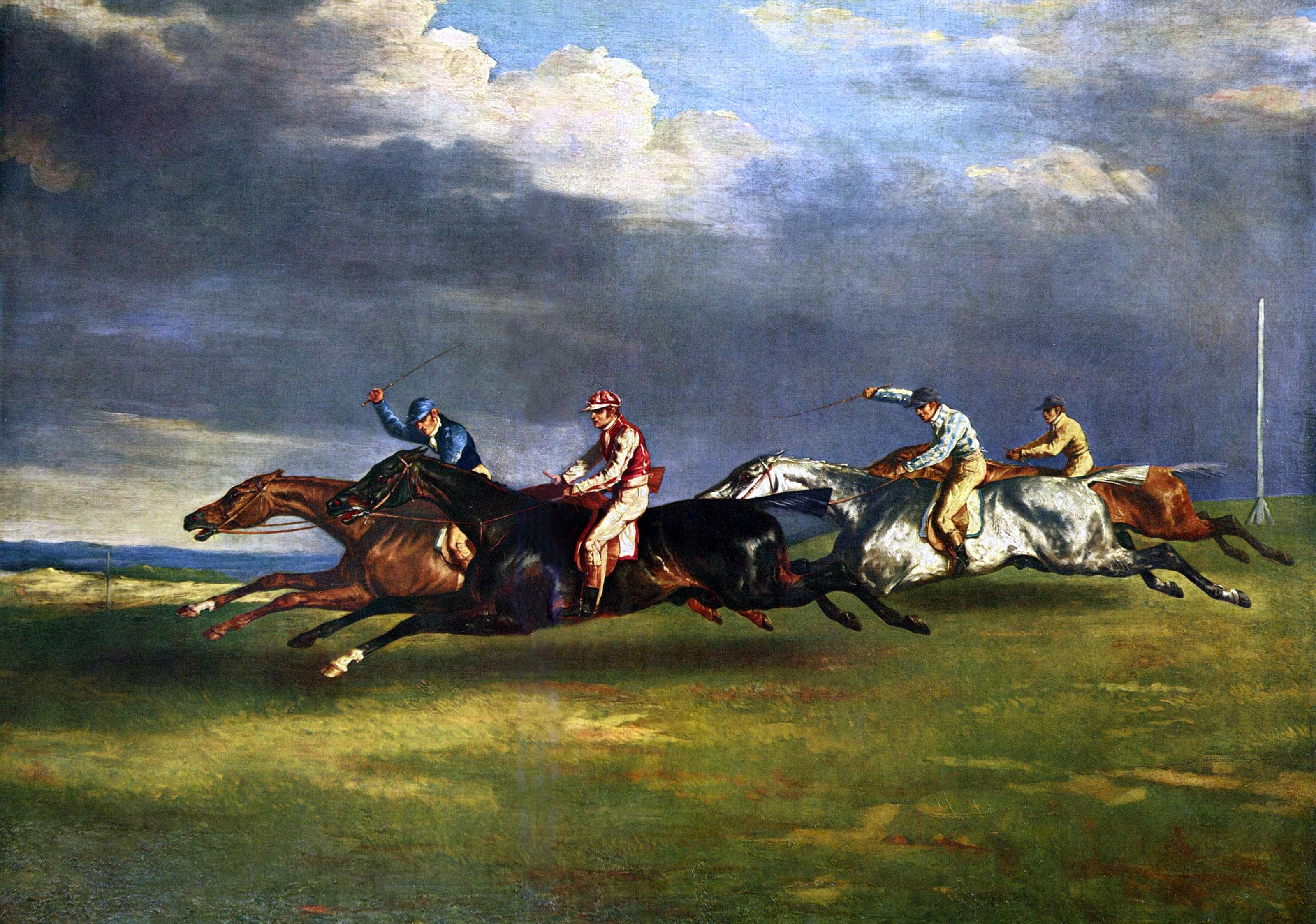|
Sir James Miller, 2nd Baronet
Sir James Percy Miller, 2nd Baronet, (22 October 1864 – 22 January 1906) was a British soldier, known as a racehorse owner. Over the 17 years when he had horses in training, Miller won 161 races, worth £114,005. Life Miller was the eldest surviving son of Sir William Miller, 1st Baronet, by Mary Anne, daughter of John Farley Leith, a Queen's Counsel and Member of Parliament for Aberdeen. He was educated at Eton College and Sandhurst. Miller was a Captain in the 14th Hussars from 1885 to 1892, and Adjutant from 1888 to 1892; and served in the Second Boer War from 1900 where in 1901 he was second in command of the sixth battalion, Imperial Yeomanry. He was made an Hon. Major in the army in 1901 and became a full Major in the Lothians and Berwickshire Imperial Yeomanry from March 1902. He was mentioned in dispatches, and was awarded the Distinguished Service Order. Miller was a Deputy Lieutenant and Justice of the Peace for Berwickshire. His father's fortune, made from herr ... [...More Info...] [...Related Items...] OR: [Wikipedia] [Google] [Baidu] |
James Percy Miller Vanity Fair 6 September 1890
James is a common English language surname and given name: *James (name), the typically masculine first name James * James (surname), various people with the last name James James or James City may also refer to: People * King James (other), various kings named James * Saint James (other) * James (musician) * James, brother of Jesus Places Canada * James Bay, a large body of water * James, Ontario United Kingdom * James College, a college of the University of York United States * James, Georgia, an unincorporated community * James, Iowa, an unincorporated community * James City, North Carolina * James City County, Virginia ** James City (Virginia Company) ** James City Shire * James City, Pennsylvania * St. James City, Florida Arts, entertainment, and media * ''James'' (2005 film), a Bollywood film * ''James'' (2008 film), an Irish short film * ''James'' (2022 film), an Indian Kannada-language film * James the Red Engine, a character in ''Thomas the Tank En ... [...More Info...] [...Related Items...] OR: [Wikipedia] [Google] [Baidu] |
Manderston House
Manderston House, Duns, Berwickshire, Scotland, is the home of The Rt Hon. The 4th Baron Palmer. It was completely rebuilt between 1901 and 1903 and has sumptuous interiors with a silver-plated staircase. The proprietor, Sir James Miller, 2nd Baronet (1864–1906), told the architect, John Kinross, that there was no budget: "It doesn't matter". The house is a Category A listed building and the surrounding area, which includes the farm complex at Buxley, is listed in the Inventory of Gardens and Designed Landscapes in Scotland. Origins Manderston was an estate of the powerful Hume family, and their tower house appears on General Roy's map of 1750. Alexander Hume, of Manderston, ''de jure'' 5th Earl of Dunbar (1651–1720), seems to be the last member of this family who owned the estate. On 14 October 1689, King William III & II confirmed the Earldom of Dunbar to him, exemplifying the previous confirmation thereof by King Charles II. The estate was later owned for a short ... [...More Info...] [...Related Items...] OR: [Wikipedia] [Google] [Baidu] |
La Sagesse (horse)
La Sagesse (1892 – 1909) was a British Thoroughbred racehorse and broodmare. She was highly tried as a juvenile in 1894, winning six of her thirteen races including the Newmarket Breeders' Plate and the Fitzwilliam Stakes. In the following year she finished second in the 1000 Guineas before recording her biggest victory in the Oaks Stakes and then running third under top weight in the Coronation Stakes. She remained in training until the age of five, competing against male opposition in valuable handicap races. She won the Derby Cup in 1896 and ran third in the City and Suburban Handicap in 1897. Background La Sagesse was a bay mare bred in England by George Alexander Baird. On Baird's death in 1893 she was put up for auction and bought for 510 guineas by Sir James Miller. During her racing career she was trained by Martin Gurry at the Abington Place stable in Newmarket, Suffolk. Her sire Wisdom, who died in 1893, was a failure as a racehorse but became a highly success ... [...More Info...] [...Related Items...] OR: [Wikipedia] [Google] [Baidu] |
Epsom Oaks
The Oaks Stakes is a Group 1 flat horse race in Great Britain open to three-year-old fillies. It is run at Epsom Downs over a distance of 1 mile, 4 furlongs and 6 yards (2,420 metres), and it is scheduled to take place each year in late May or early June. It is the second-oldest of the five Classic races, after the St Leger. Officially the Cazoo Oaks, it is also popularly known as simply The Oaks. It has increasingly come to be referred to as the Epsom Oaks in both the UK and overseas countries, although 'Epsom' is not part of the official title of the race.) It is the third of Britain's five Classic races to be held during the season, and the second of two restricted to fillies. It can also serve as the middle leg of the Fillies' Triple Crown, preceded by the 1000 Guineas and followed by the St Leger, although the feat of winning all three is rarely attempted. History The event is named after ... [...More Info...] [...Related Items...] OR: [Wikipedia] [Google] [Baidu] |
Two Thousand Guineas
The 2000 Guineas Stakes is a Group 1 flat race in Great Britain open to three-year-old thoroughbred colts and fillies. It is run on the Rowley Mile at Newmarket over a distance of 1 mile (1,609 metres) and scheduled to take place each year at the start of May. It is one of Britain's five Classic races, and at present it is the first to be run in the year. It also serves as the opening leg of the Triple Crown, followed by the Derby and the St Leger, although the feat of winning all three has been rarely attempted in recent decades. History The 2000 Guineas Stakes was first run on 18 April 1809, and it preceded the introduction of a version for fillies only, the 1000 Guineas Stakes, by five years. Both races were established by the Jockey Club under the direction of Sir Charles Bunbury, who had earlier co-founded the Derby at Epsom. The races were named according to their original prize funds (a ... [...More Info...] [...Related Items...] OR: [Wikipedia] [Google] [Baidu] |
Rock Sand
Rock Sand (1900–1914) was a British Thoroughbred race horse and sire. In a career which lasted from the spring of 1902 until October 1904 he ran twenty times and won sixteen races. He was a leading British two-year-old of his generation, winning the 2,000 Guineas Stakes The Derby and the St. Leger Stakes. He won another series of major races as a four-year-old before being retired to stud, where he had success in both Europe and North America. Background Rock Sand was a small brown horse bred by his owner Sir James Miller at his Hamilton Stud in Newmarket.Ahnert, Rainer L. (Ed. in Chief), "Thoroughbred Breeding of the World", Pozdun Publishing, Germany, 1970 Rock Sand was sired by Sainfoin, the winner of the 1890 Derby, who was bred by Queen Victoria. He was the first foal of Roquebrune by St. Simon who won two races and was a half-sister to Epsom Oaks winner Seabreeze. Rock Sand was trained throughout his career by George Blackwell at Newmarket, Suffolk. Rock Sand was ... [...More Info...] [...Related Items...] OR: [Wikipedia] [Google] [Baidu] |
Guinea (British Coin)
The guinea (; commonly abbreviated gn., or gns. in plural) was a coin, minted in Great Britain between 1663 and 1814, that contained approximately one-quarter of an ounce of gold. The name came from the Guinea region in West Africa, from where much of the gold used to make the coins was sourced. It was the first English machine-struck gold coin, originally representing a value of 20 shillings in sterling specie, equal to one pound, but rises in the price of gold relative to silver caused the value of the guinea to increase, at times to as high as thirty shillings. From 1717 to 1816, its value was officially fixed at twenty-one shillings. In the Great Recoinage of 1816, the guinea was demonetised and the word "guinea" became a colloquial or specialised term. Although the coin itself no longer circulated, the term ''guinea'' survived as a unit of account in some fields. Notable usages included professional fees (medical, legal, etc.), which were often invoiced in guineas, and h ... [...More Info...] [...Related Items...] OR: [Wikipedia] [Google] [Baidu] |
Sir Robert Jardine
Sir Robert Jardine, 1st Baronet (24 May 1825 – 17 February 1905) was a Scottish businessman and Liberal politician. Life Jardine was born at Edinburgh the son of David Jardine of Muir House, Lockerbie, Dumfries and his wife Rachel Johnstone. In 1865 he became head of Jardine, Matheson and Co., one of the largest Far East trading houses based in Hong Kong. At the general election in July 1865, Jardine was elected as Member of Parliament (MP) for Ashburton in Devon where his uncle William Jardine had been an earlier MP. The Ashburton constituency was abolished at the 1868 general election and he was elected instead at Dumfries Burghs. In 1874 he changed seat again and stood unsuccessfully for Dumfriesshire Dumfriesshire or the County of Dumfries or Shire of Dumfries (''Siorrachd Dhùn Phris'' in Gaelic) is a historic county and registration county in southern Scotland. The Dumfries lieutenancy area covers a similar area to the historic county. I .... However he was ... [...More Info...] [...Related Items...] OR: [Wikipedia] [Google] [Baidu] |
Epsom Derby
The Derby Stakes, also known as the Epsom Derby or the Derby, and as the Cazoo Derby for sponsorship reasons, is a Group 1 flat horse race in England open to three-year-old colts and fillies. It is run at Epsom Downs Racecourse in Surrey on the first Saturday of June each year, over a distance of one mile, four furlongs and 6 yards (2,420 metres). It was first run in 1780. It is Britain's richest flat horse race, and the most prestigious of the five Classics. It is sometimes referred to as the "Blue Riband" of the turf. The race serves as the middle leg of the historically significant Triple Crown of British horse racing, preceded by the 2000 Guineas and followed by the St Leger, although the feat of winning all three is rarely attempted in the modern era due to changing priorities in racing and breeding, and the demands it places on horses. The name "Derby" (deriving from the sponsorship of the Earl of Derby) has been borrowed many times, notably by the Kentucky D ... [...More Info...] [...Related Items...] OR: [Wikipedia] [Google] [Baidu] |
Sainfoin (horse)
Sainfoin (1887 – October 1911) was a British Thoroughbred racehorse that was the winner of the 1890 Epsom Derby and was the sire of Rock Sand, the tenth winner of the Triple Crown in 1903. Pedigree Sainfoin was sired by Springfield out of the mare Sanda and was foaled at Hampton Court Stud, owned by Queen Victoria, in 1887. Most of the yearlings produced by Hampton Court Stud were underfed and skinny, which resulted in little interest in Sainfoin as a racing prospect. He was sold as a yearling for 500 guineas to horse trainer John Porter and Sir Robert Jardine. Racing career Sainfoin's only start and win as a two-year-old was in the £928 Astley Stakes at Lewes Racecourse. He carried 120 pounds and won easily by one and a half lengths from Garter, from whom he was receiving eight pounds. In 1890, he made his first appearance in the Esher Stakes, a handicap race at Sandown. After the race, Porter felt that the colt would have little chance in the Derby, and accepted an offe ... [...More Info...] [...Related Items...] OR: [Wikipedia] [Google] [Baidu] |
Thoroughbred
The Thoroughbred is a horse breed best known for its use in horse racing. Although the word ''thoroughbred'' is sometimes used to refer to any breed of purebred horse, it technically refers only to the Thoroughbred breed. Thoroughbreds are considered " hot-blooded" horses that are known for their agility, speed, and spirit. The Thoroughbred, as it is known today, was developed in 17th- and 18th-century England, when native mares were crossbred with imported Oriental stallions of Arabian, Barb, and Turkoman breeding. All modern Thoroughbreds can trace their pedigrees to three stallions originally imported into England in the 17th and 18th centuries, and to a larger number of foundation mares of mostly English breeding. During the 18th and 19th centuries, the Thoroughbred breed spread throughout the world; they were imported into North America starting in 1730 and into Australia, Europe, Japan and South America during the 19th century. Millions of Thoroughbreds exist today, a ... [...More Info...] [...Related Items...] OR: [Wikipedia] [Google] [Baidu] |








.jpg)
